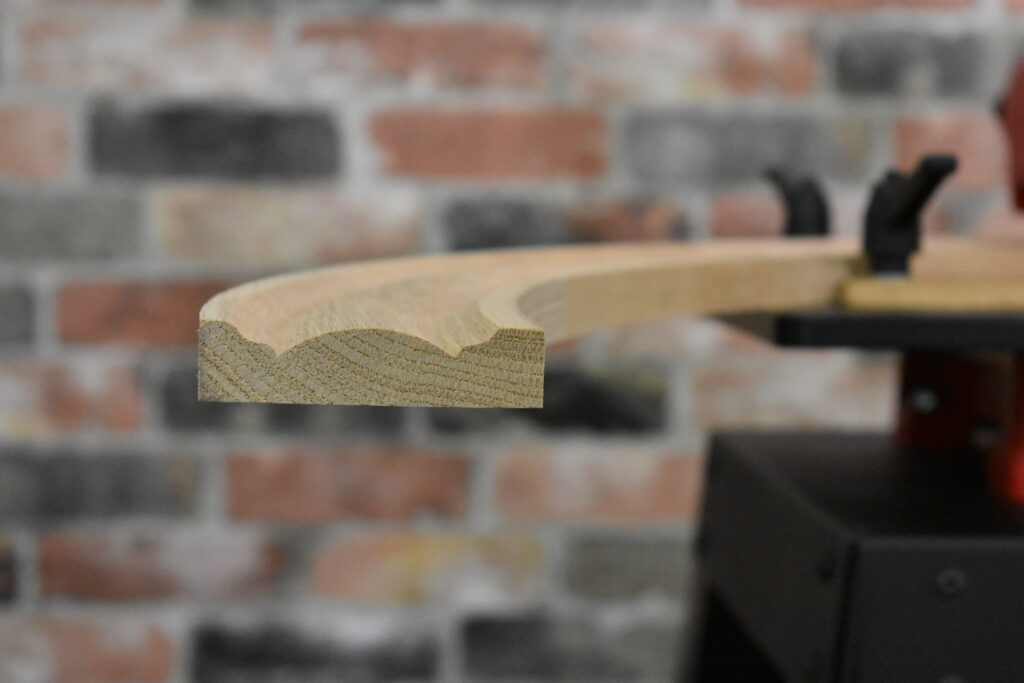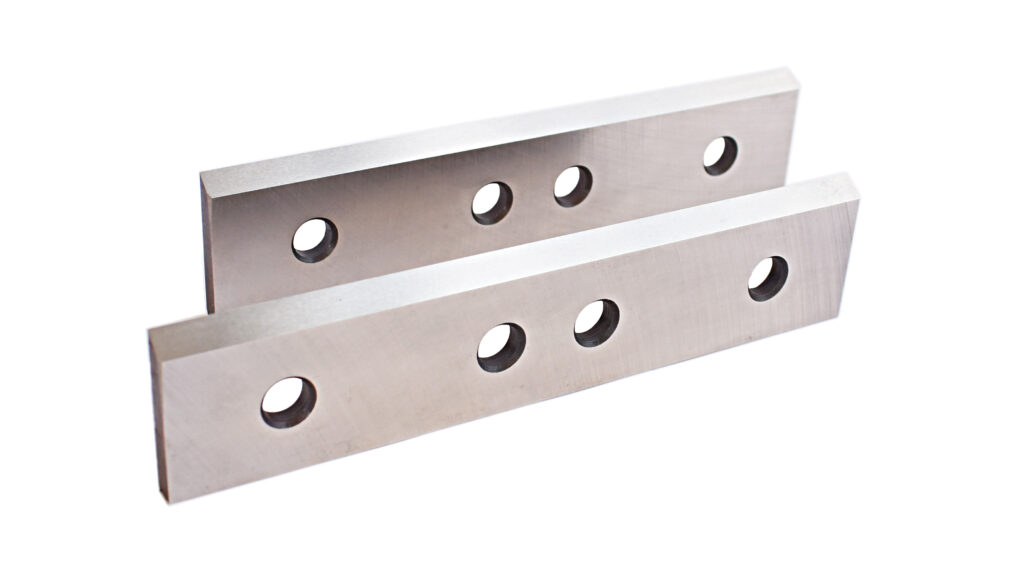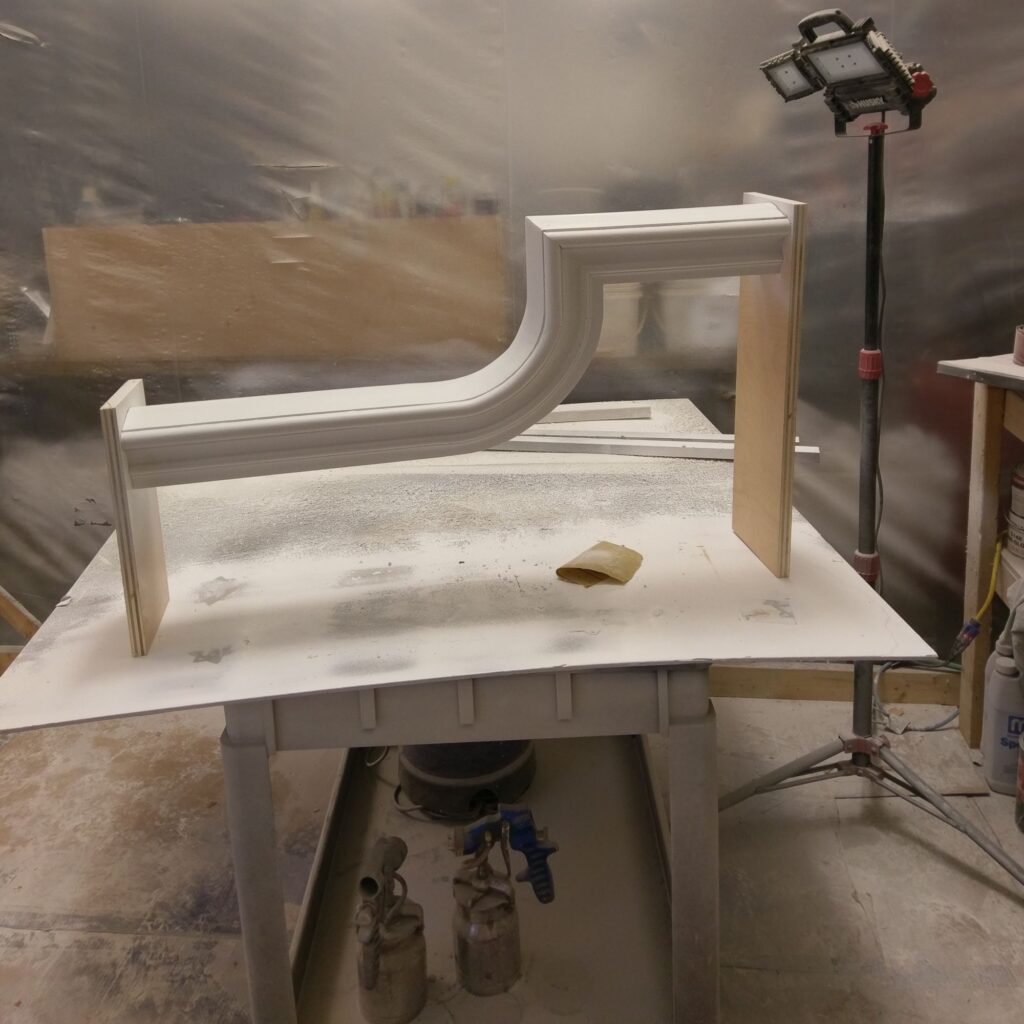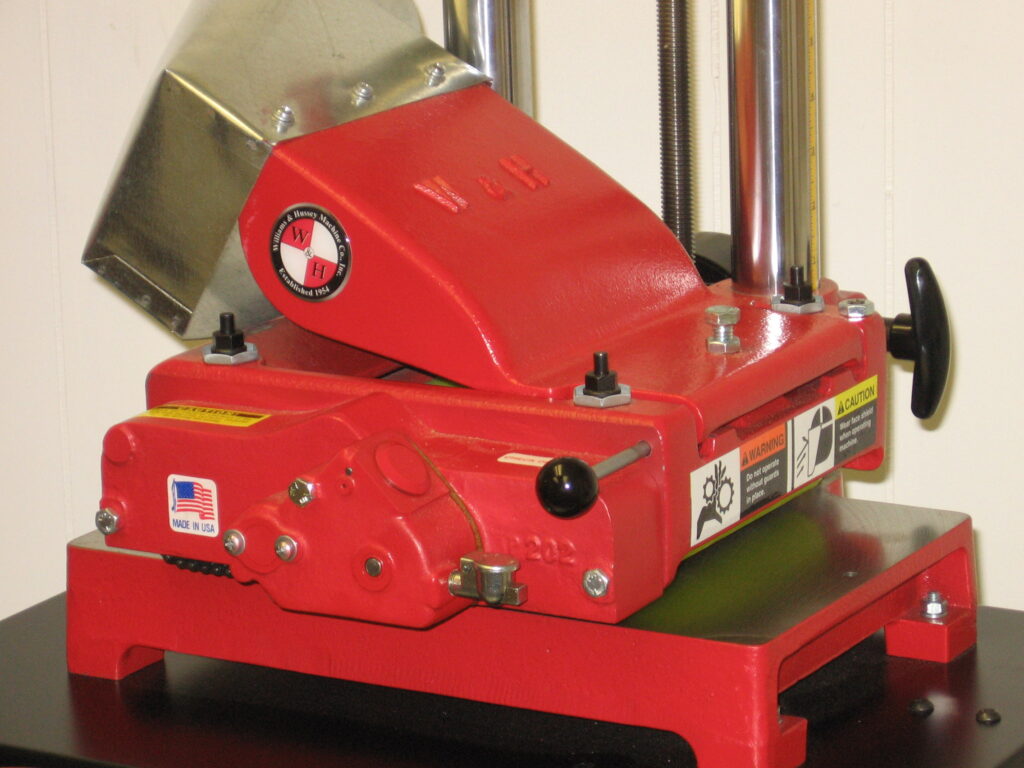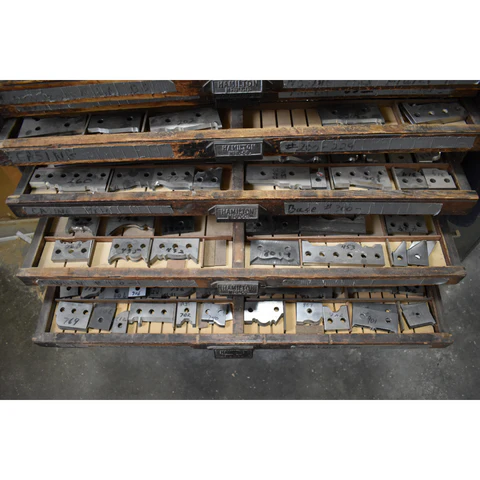A V-Block is a custom-built wooden cradle that holds stock at an angle during the molding process. This angled setup allows woodworkers to run deeper profiles—up to the maximum ¾” cutting depth of a Williams & Hussey molder—while reducing strain on the cutterhead. By elevating the stock at a 30° or 60° angle (or another recommended angle), the molder can gradually remove material in a controlled way. This method produces cleaner cuts, less tear-out, and longer tool life. It’s beneficial when producing deep-profile molding or when the depth of cut exceeds ¾”.
Williams & Hussey does not provide V-Blocks but will supply recommended angles when a custom knife requires one. With those guidelines, woodworkers can build their own V-Block cradle for stability, accuracy, and safety during operation.
If you’re running straight molding and need to exceed the standard depth of cut, using a V-Block might be the right solution for your project.
Why Use a V-Block?
Deep-profile cuts can strain your molder, leading to tool wear and imperfect results. A V-Block helps distribute the workload. It reduces stress on the cutterhead while producing cleaner, more accurate cuts. A V-Block allows for controlled cutting by angling the stock, improving precision, and extending tool life.
- Prevents Chatter and Tear-Out: Reduces material removal in a single pass for a smoother cut.
- Reduces Machine Wear: Minimizes strain on the cutterhead and knives.
- Improves Control Over Deep Profiles: Keeps stock stable for consistent results.
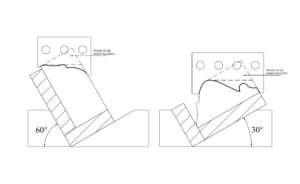
When to Use a V-Block
Not all molding projects require a V-Block, but it can be a crucial tool for deep or intricate profiles. Using a V-Block helps prevent tear-out and creates a smooth, consistent finish on complex cuts. A V-Block is required when deep cuts exceed ¾-inch. It is suggested for:
- Deep-Profile Molding: Supports workpieces needing extra material removal.
- Straight Moldings with Large Cut Depths: Helps achieve clean, uniform cuts.
- Softwoods or Brittle Materials: Prevents splintering by adding support.
- Custom Profiles: Stabilizes complex shapes during shaping.

Building and Using a V-Block
You can easily build a V-Block to use with profile knives. If a custom knife requires a V-Block, Williams & Hussey will provide the recommended angle to help you make an effective cradle. Proper construction and setup of a V-Block improves the accuracy of deep-profile molding.
Step 1: Determine the Correct Angle
- Refer to the guide included with your custom knife.
- If no guide is available, measure the required cutting depth and mark an angled guideline on the stock.
- Use an adjustable angle finder to confirm the correct incline.
Step 2: Construct the V-Block Cradle
- Choose Durable Materials: Hardwood, MDF, or plywood work well.
- Cut the Angle: Use a table saw or band saw for precision.
- Assemble Securely: Attach the angled supports to a flat base using screws and glue, making sure the cradle:Holds stock securely. Aligns properly for accurate cuts. Stays fixed to the molder table.
Step 3: Secure the Workpiece
- Test-fit the stock before starting.
- Use clamps or guides for added stability.
Step 4: Run the Cut
- Begin with shallow passes to avoid excessive material removal.
- Adjust the feed rate for precision.
- Check for chatter and adjust as needed.
Step 5: Inspect the Finished Cut
- Check for smooth, uniform results.
Adjust the knife or V-Block angle if necessary.
Avoiding Common Mistakes
Using a V-Block effectively requires proper setup and technique. Here’s how to avoid common mistakes:
- Incorrect Angle Setup: Use the recommended angle from Williams & Hussey to prevent uneven cuts.
- Loose Stock Positioning: Secure the material with clamps or guides to avoid shifting.
- Cutting Too Deep Too Quickly: Take multiple shallow passes to maintain quality and reduce wear.
- Skipping Test Cuts: Always test alignment before running the final stock.
Tips for First-Time Users
A few best practices can make a significant difference if you’re new to using a V-Block. Taking the time to properly align, secure, and test your setup will improve both the quality of your cuts and the longevity of your tools.
- Mark the Stock: Draw reference lines to verify alignment.
- Check Knives and Cutterhead: Dull tools affect cut quality.
- Keep the Molder Clean: Clear sawdust between passes for accuracy.
Conclusion
Using a V-block is a game-changer for deep-profile molding, providing stability, precision, and reduced strain on your equipment. By incorporating this technique, woodworkers can produce cleaner, more professional-quality moldings with minimal effort.
For guidance on determining the correct V-block angle for your specific profile, consult the setup guides provided with your Williams & Hussey knives or contact their support team for assistance.


